During the fighting in eastern Ukraine, the Armed Forces of Ukraine destroyed a rare russian armored vehicle: Ural Chekan or Shchuka (Pike), based on Ural 432007-0111-31 truck. Such armored vehicles are usually used by soldiers of private military companies, usually Wagner Group. According to ArmyInform, the fact of this armored vehicle destruction was leaked by the Kremlin propaganda itself. Still, the vehicle itself technically is relatively foggy, apart the fact its chassis was clearly identified. Is it simply a renewal of the 60 years old BTR-152 or something entirely different ?
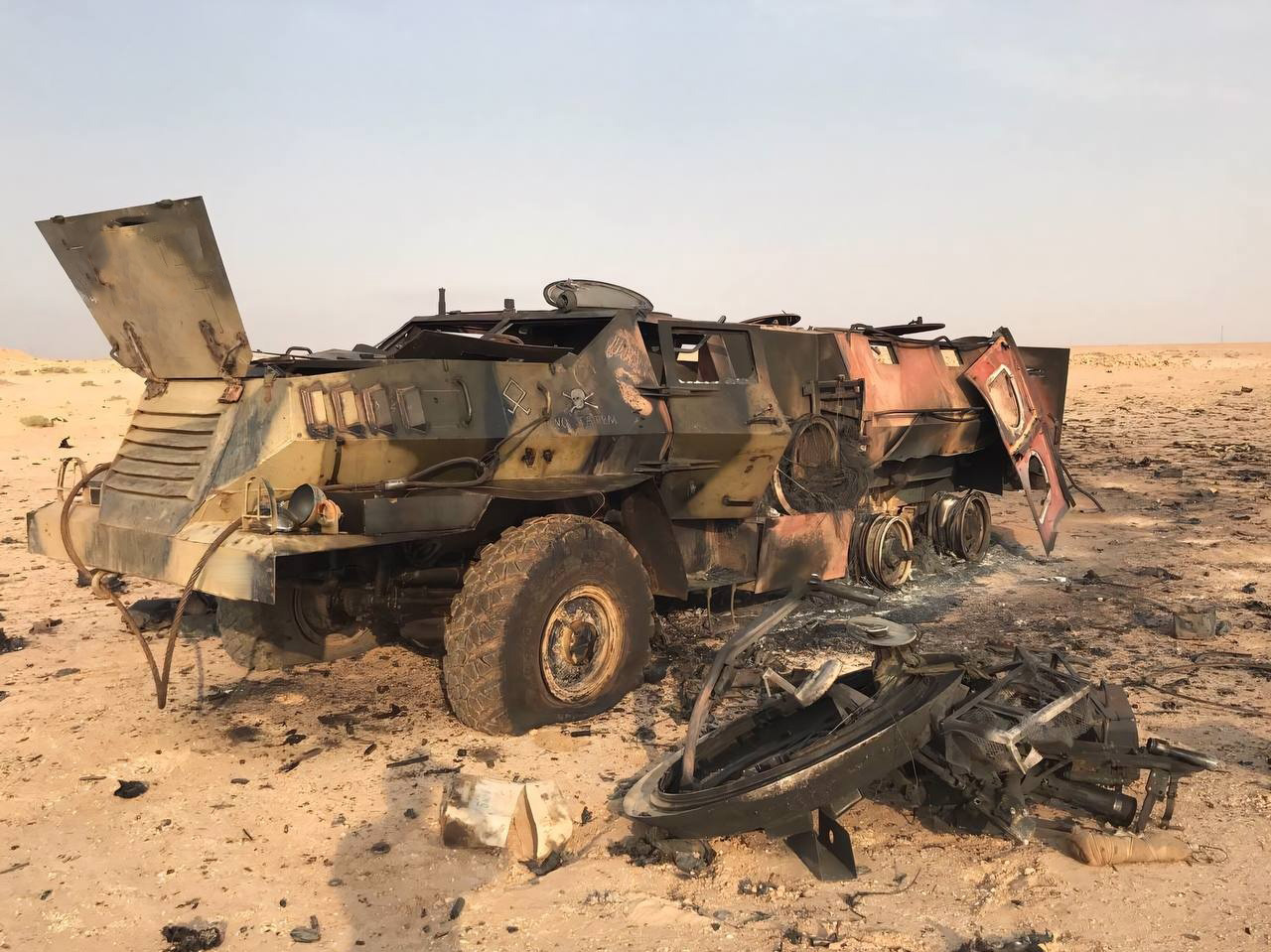
Wagnerite Chukan in Syria
The Ural Chekan, also called the Ural-432007 0111-31 MRAP is a Wagner modification of the Ural-4320 truck. First identified use was with Centrafrican Republic and Libya. It seems only Wagner, and not any other Russian force uses it so far. The Ural Chekan armored vehicle was dubbed by many after photos leaked out, as a reincarnation of the Soviet BTR-152, due to its visual similarity. But apart beong a 6x6 battle taxi with well sloped armour, similarities ends there. First off, the vehicle shows a closed top, and in some versions a BTR-70 turret is even installed on the roof, converting it as an IFV. The armor is assumed to be light, protecting from small arms fire and shrapnel, well sloped to play angles and increase thickness artificially. It's presented as a MRAP with some basic mine protection (limited "V" belly) that could be dicerned at the bottom, but none of the niceties of a standard western MRAP, notably a much taller belly, suspended seats and other measures.
During russia’s wars in Syria and Africa, these in addition ofen were lost to mines, roasting the crew inside. Thus, in Syria, and with the 2022 invasion Wagnerites were shown riding above the vehicle rather than inside, a 40 years old "tradition" of Afghanistan. Mercenaries used notably the vehicle in South Africa and all wars in Africa where it was deployed with a first vehicle destructoyed in eastern Ukraine in June 2022, adorned with a distinctive "Z" of the "special operation".
Not officially recognized by Russian law they are tolerated and supported, operates like a hybrid between a mercenary army, intelligence asset, and business. It soon gained a reputation for extremely brutal methods and accused of human rights abuses and war crimes. Fighters may have been recruited first from professional soldiers, but later from Russian prison populations in exchange for pardons after 6 months of combat service. It met its demise in June 2023 as under is vocal and mediatic figurehead, E.Prigozhin's a mutiny was organized, the so-called "march on Moscow", openly challenging the Russian military leadership. His plane was likely shot down (officially crashed by accident), the column was attacked and defeated, and all assets were partly absorbed by the Russian state. Many fighters were moved into new formations under direct Russian military control (like the "Africa Corps"). As an independent force it was disbanded or rebranded with remnants still active in Africa and parts of the Middle East under Russian oversight.
Although equipped in Syria-Africa with a mix of rather fast and light wheeled vehicle, when the brigade was deployed in Ukraine from 2022, Wagner PMC received heavier vehicles, notably tanks such as the T-80 and T-90M.
The St. Petersburg-based AVD company, specializes in armoring existing vehicle and repair, was handed over a batch of at least four "Chekan" vehicles. They are manufactured by refurbishing Russian Ural-4320 three-axle trucks, capable of carrying over 6 tons. Two types of vehicles were derived, an armored personnel carrier with the fully monty (seen here) and a partially armoured truck with the same froward armored car body and a simpler, flat-sided troop transport compartment. The only change compared to a standard troop truck, are the now steel armoured panels replacing the lower flatbed walls and frames. These panels are subdivided along the former structure pillars, with small squares shutters acting as pistol ports, but more rudimentary. This simplified APC was seen in 2024.
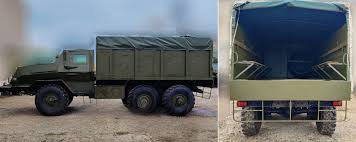
The "Chekan" APC is the version with fully angular armored van body with an unknown level of ballistic protection, assumed to protecting against light fragments and small arms fire. In this version the angular troop compartmnt is far more cramped but the armour design ensured better protection, and it is now flush with the armoured driver’s cab. This is assuredly a more sophisticated design with a limited V-shaped bottom to dissipate a mine explosion. Standard armament seems to be surplus BTR-70 type conical enclosed turret armed with the KPVT 14.5mm machine gun plus coasial PKT 7.62mm. Equipement is said to include also a basic night vision system.
There is little reliable information and no clear date to put on the accepted design, since it was developed and signed outside the regular Russian army procurement process. We can assume therefore a rapid development, partly due to the crude nature of the vehicle, and absence of field tests before launching a production. It was probably tailored for the Wagner campaign in Syria and later Libya, with a fully armoured troop compartment (unlike the BTR-152 or the partial Ural APC conversion seen above. These simplified versions with a van body seems to be a latter addition for the 2022 invasion of Ukraine, as resources were lacking for the standard Shchuka. It seems there is still a certain level of mine protection allowing crews to survive.
*extrapolated from a fully loaded Ural 4320.
Another event that highlighted their use, was the push towards Moskow, the famous "Prigozhin's coup", from Rostov. At least 29 wheeled armored vehicles were part of the column, including six Shchuka armored carriers. It was later reported that more than 3,500 mercenaries of Wagner Group arrived in belarus, some 30% of the belarusian own military. The Wagner Group being gutted, up to its HQ, the existing vehucle, of dubious use on the Ukrainian front, were most likely sent to Bielorussia. The vehicles in 2023 were also operated by SAF forces, allegedly on the streets of Omdurman, captured after the crisis started.
The story if the vehicle is not over however, as in April 2025 was unveiled a new version of the Chekan, notably a logistic carrier. Recently AVD presented a dedicated electronic warfare (EW) carrier.
The mystery MRAP

Wagnerite Chukan in Syria
The Ural Chekan, also called the Ural-432007 0111-31 MRAP is a Wagner modification of the Ural-4320 truck. First identified use was with Centrafrican Republic and Libya. It seems only Wagner, and not any other Russian force uses it so far. The Ural Chekan armored vehicle was dubbed by many after photos leaked out, as a reincarnation of the Soviet BTR-152, due to its visual similarity. But apart beong a 6x6 battle taxi with well sloped armour, similarities ends there. First off, the vehicle shows a closed top, and in some versions a BTR-70 turret is even installed on the roof, converting it as an IFV. The armor is assumed to be light, protecting from small arms fire and shrapnel, well sloped to play angles and increase thickness artificially. It's presented as a MRAP with some basic mine protection (limited "V" belly) that could be dicerned at the bottom, but none of the niceties of a standard western MRAP, notably a much taller belly, suspended seats and other measures.
During russia’s wars in Syria and Africa, these in addition ofen were lost to mines, roasting the crew inside. Thus, in Syria, and with the 2022 invasion Wagnerites were shown riding above the vehicle rather than inside, a 40 years old "tradition" of Afghanistan. Mercenaries used notably the vehicle in South Africa and all wars in Africa where it was deployed with a first vehicle destructoyed in eastern Ukraine in June 2022, adorned with a distinctive "Z" of the "special operation".
About Wagner PMC
Wagner PMC was Founded Around 2014, during the early stages of the war in Donbas (Ukraine by Dmitry Utkin, former GRU (Russian military intelligence) officer. His military call sign, "Wagner", was after Richard Wagner, Hitler's favorite composer. He was also known for his extreme ideologies. Key Financier was Yevgeny Prigozhin, businessman nicknamed "Putin’s chef" for his catering contracts with the Kremlin, was long associated with Wagner until his death in August 2023 (plane crash). Wagner was known for its operations in Ukraine (Crimea, Donbas) since 2014, the infamous "little green men", fighting alongside Russian and pro-Russian forces in Syria and supporting Assad's government but also for its activities in Africa and especially Libya, Central African Republic (CAR), Mali, and Sudan, providing security services, training, and even mining operations (gold, diamonds) in exchange for security against islamist groups.Not officially recognized by Russian law they are tolerated and supported, operates like a hybrid between a mercenary army, intelligence asset, and business. It soon gained a reputation for extremely brutal methods and accused of human rights abuses and war crimes. Fighters may have been recruited first from professional soldiers, but later from Russian prison populations in exchange for pardons after 6 months of combat service. It met its demise in June 2023 as under is vocal and mediatic figurehead, E.Prigozhin's a mutiny was organized, the so-called "march on Moscow", openly challenging the Russian military leadership. His plane was likely shot down (officially crashed by accident), the column was attacked and defeated, and all assets were partly absorbed by the Russian state. Many fighters were moved into new formations under direct Russian military control (like the "Africa Corps"). As an independent force it was disbanded or rebranded with remnants still active in Africa and parts of the Middle East under Russian oversight.
Although equipped in Syria-Africa with a mix of rather fast and light wheeled vehicle, when the brigade was deployed in Ukraine from 2022, Wagner PMC received heavier vehicles, notably tanks such as the T-80 and T-90M.
About the Ural-4320
The Ural-4320 is a famous Russian (originally Soviet) heavy-duty off-road 6×6 truck, designed and manufactured by the Ural Automotive Plant (UralAZ) since 1977. It's known for its extreme durability, off-road capability, and simplicity, making it a workhorse for military, industrial, and civilian use. Thus 6x6 (all-wheel drive) was originally equipped with a V8 diesel engine; later models feature updated, more efficient engines. It had a payload capacity of around 4.5–5 tons (depending on the versions), as military troop and cargo transport, Fuel and water tankers, Mobile command posts, Artillery towing and a base for special modifications (fire trucks, crane trucks, etc.). Extremely rugged chassis with high ground clearancen tested able to start and operate in temperatures from -50°C to +50°C it replaced the older Ural-375D, which had a gasoline engine. This still a favorite platform for military forces in Russia, Eastern Europe, and many other countries. It was declined notably by AVD as an APC for Evro Polis LLC.Design of the Ural 432007 Shchuka
Possible Development
The vehicle is produced in Russia, receiving its Declaration of conformity to the technical regulations of the Eurasian Economic Union number TC N RU Д-RU.РА01.А.72635. According to “Novaya Gazeta,” this declaration is an information about the manufacturer, "Evro Polis LLC" domiciliated at Krasnogorsk, Moscow Oblast. Nominal owners of “Euro Polis” are closely associated with Russian entrepreneur Yevgeny Prigozhin (“Putin’s cook”), also manager of troll farms, but mostly remembered for its major mercenary company enabling covert Russian Operations notably in Africa, playing their part in the serie of coups. “Evro Polis” LLC, according to an agreement concluded with the Syrian state by December 2016, pledged to conduct hostilities with Assad’s opponents in exchange for 25% of oil and gas production on all retaken fields. The vehicle was used there first, and named “Wagner`s wagon”, so we can trace back its development there, albeit the AVD company did the actual transformation it seems the design was done by Evro Polis. In reference to Wagner it was also sometimes called "Valkyrie".The St. Petersburg-based AVD company, specializes in armoring existing vehicle and repair, was handed over a batch of at least four "Chekan" vehicles. They are manufactured by refurbishing Russian Ural-4320 three-axle trucks, capable of carrying over 6 tons. Two types of vehicles were derived, an armored personnel carrier with the fully monty (seen here) and a partially armoured truck with the same froward armored car body and a simpler, flat-sided troop transport compartment. The only change compared to a standard troop truck, are the now steel armoured panels replacing the lower flatbed walls and frames. These panels are subdivided along the former structure pillars, with small squares shutters acting as pistol ports, but more rudimentary. This simplified APC was seen in 2024.

The "Chekan" APC is the version with fully angular armored van body with an unknown level of ballistic protection, assumed to protecting against light fragments and small arms fire. In this version the angular troop compartmnt is far more cramped but the armour design ensured better protection, and it is now flush with the armoured driver’s cab. This is assuredly a more sophisticated design with a limited V-shaped bottom to dissipate a mine explosion. Standard armament seems to be surplus BTR-70 type conical enclosed turret armed with the KPVT 14.5mm machine gun plus coasial PKT 7.62mm. Equipement is said to include also a basic night vision system.
There is little reliable information and no clear date to put on the accepted design, since it was developed and signed outside the regular Russian army procurement process. We can assume therefore a rapid development, partly due to the crude nature of the vehicle, and absence of field tests before launching a production. It was probably tailored for the Wagner campaign in Syria and later Libya, with a fully armoured troop compartment (unlike the BTR-152 or the partial Ural APC conversion seen above. These simplified versions with a van body seems to be a latter addition for the 2022 invasion of Ukraine, as resources were lacking for the standard Shchuka. It seems there is still a certain level of mine protection allowing crews to survive.
General Layout
The apparent layout of the vehicle is indeed very much inspired by the BTR-152, which probabl was its original blueprint, down to the shape if the radiator louvres. Above the original Ural 4320 chassis is mounted an armoured hull ending with a "V" bottom to offer some protection against mines, and a prismatic section, with bunks for six or eight infantry facing inwards, plus two small windows with armoured glass and three pistol ports. Access is from the rear's two doors which themlselves has pistol ports and small observation windows. In addition to fire while standing, there are two rear roof hatches with individual smaller hatches. The cabin is accessed via two side doors and is given two armoured windows, front split windshield but no armoured shutters, only armoured glass protecting againts small arms fire. There seems to be variations in the nose, with side louvres and access hatches. The radiator forward met a simple bumper, with two standard truck lights protected by brush guards on the flat forward fenders. There are several locations to store and strap additional equipment.Performances
The chassis is the same as the Ural 4320 and there are no precision about the specific variant use, but we can assume that to carry the new armoured body, the beefiest was chosen. It is given the YaMZ-238M2 engine, a V8 diesel rated for 240 PS (177 kW) coupled with a transmission with five-speed and two-speed distributor box with interaxle locked differential. This is not bran new tech, the basis goes back to 1977. Top speed might be around 80 kph on road, range around 500 km given the performances of the loaded 4320 standard truck. It is not amphibious. It has however a known payload of 6 tons.Armament
The vehicle is a "battle taxi" and was mostly seen with an apparently stabdard BTR-70 turret, conical, one man, and sporting simple optics and a mount for a coaxial 14.5 mm KPTV heavy machine gune and coaxial PKT light machine gun, 7.62 mm. Ammunition load is unknown. It is completed by the squad's own gear, including mortars, Manpads and ATGMs.Protection
The armoured hull, angular, protects against small arms fire and shrapnel, with some extra resistance forward, but the steel grade use is probably not on par with military grade armour since AVD is known for armouring civilian vehicles, not AFV protection. The presence of a fire extinguisher outide the engine compartment is unknown, and the vehicle is not marked as NBC protected either. There are no active protection, notably smokle projectors, detectors of any sort. The vehicle is of course not immune to heavy gunfire, starting with everything above to 12.7 or 14.5 mm, including 20-30 mm or associated autocannon gunfire, tank gunfire, and ATGMs as shown by an obliterated vehicle in 2021 by a Kornet ATGM. Some were spotted with added rubber panels over the rear wheels, front axles, and add-on metal on the nose and other parts of the chassis. The turrets is from the BTR-70 at offers about 8mm protection to the gunner.specifications | |
| Dimensions (L-w-h) | c7,5 x 2,6 x 3 m |
| Total weight, battle ready | c12 Tons (24000 lbs) |
| Crew | 2+8 |
| Propulsion | 14.9L YaMZ-238M2 V8 diesel, 5-speed manual GBX |
| Speed (land/water) | c80kph flat* |
| Range (on flat) | c500 km* |
| Armament | 14.5 mm KPVT HMG, 7.62mm PKT LMG |
| Armor | Unknown, est. 6mm |
| Total production | Unknown, est. 100 |
Combat Record
Federal News Agency rather unusually reported an armored car “lit up”. In the footage, filmed on the section of the Mironovsky-Svitlodarsk road, a damaged and most likely abandoned Ural “Chekan” armored car with characteristic Wagnerite markings on the sides, notably skulls. These have been spotted before, by Kremlin-supported private military company “Wagner” (now PMC “Liga”) Syria, Libya, Sudan and the Central African Republic. A British intel sources reported that Russia had transferred about a thousand "Wagner" fighters to eastern Ukraine and the Armed Forces of Ukraine had destroyed a large "Wagner" unit in 2022. The most famous footage was of a damaged green vehicle marked by a "Z" disabled (tires shot) on the roadside in June 2022, spotted near Svitlodarsk in the Donetsk Oblast.Another event that highlighted their use, was the push towards Moskow, the famous "Prigozhin's coup", from Rostov. At least 29 wheeled armored vehicles were part of the column, including six Shchuka armored carriers. It was later reported that more than 3,500 mercenaries of Wagner Group arrived in belarus, some 30% of the belarusian own military. The Wagner Group being gutted, up to its HQ, the existing vehucle, of dubious use on the Ukrainian front, were most likely sent to Bielorussia. The vehicles in 2023 were also operated by SAF forces, allegedly on the streets of Omdurman, captured after the crisis started.
The story if the vehicle is not over however, as in April 2025 was unveiled a new version of the Chekan, notably a logistic carrier. Recently AVD presented a dedicated electronic warfare (EW) carrier.
Illustrations
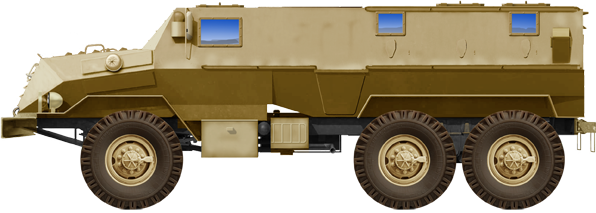
Shchuka in Libya, 2020
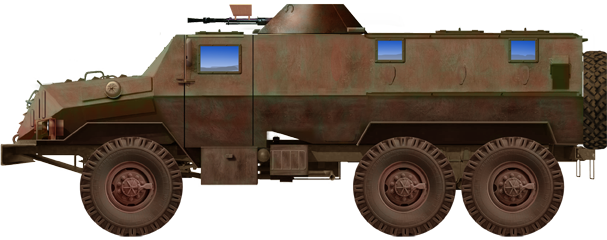
Shchuka in CAR (Centrafrican Republic) in 2021
Gallery
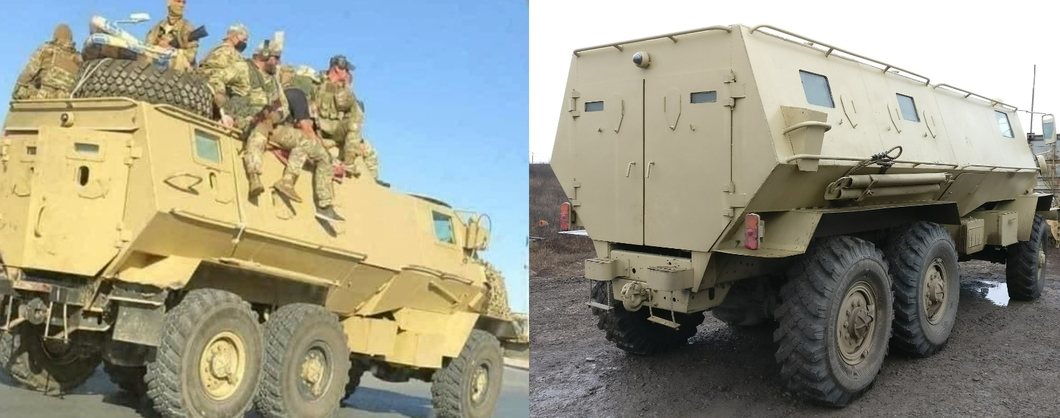
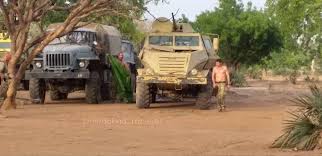
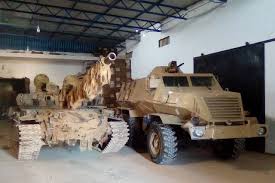
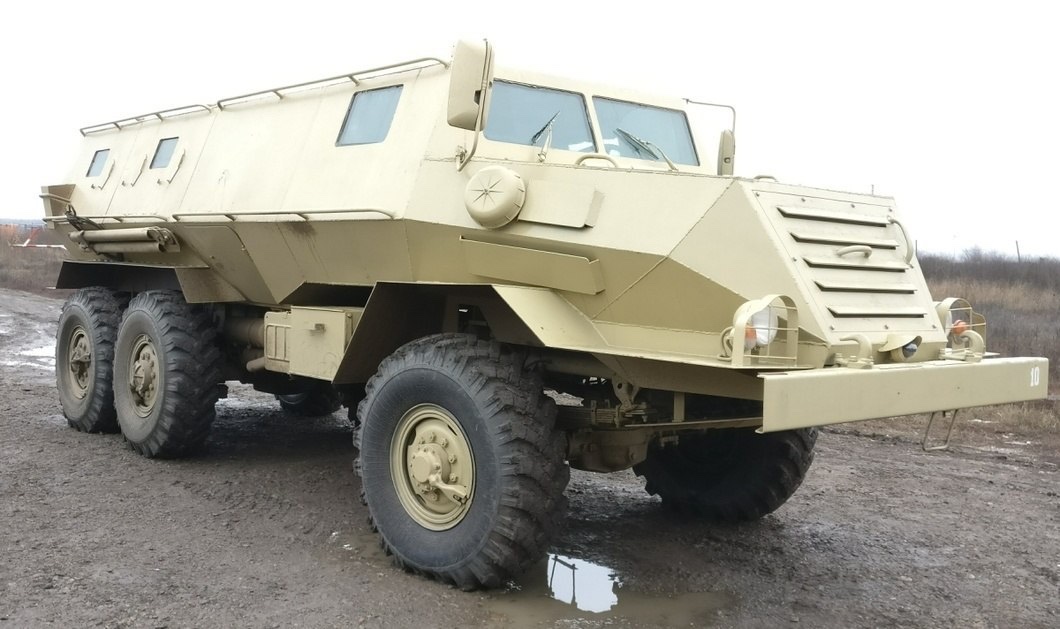
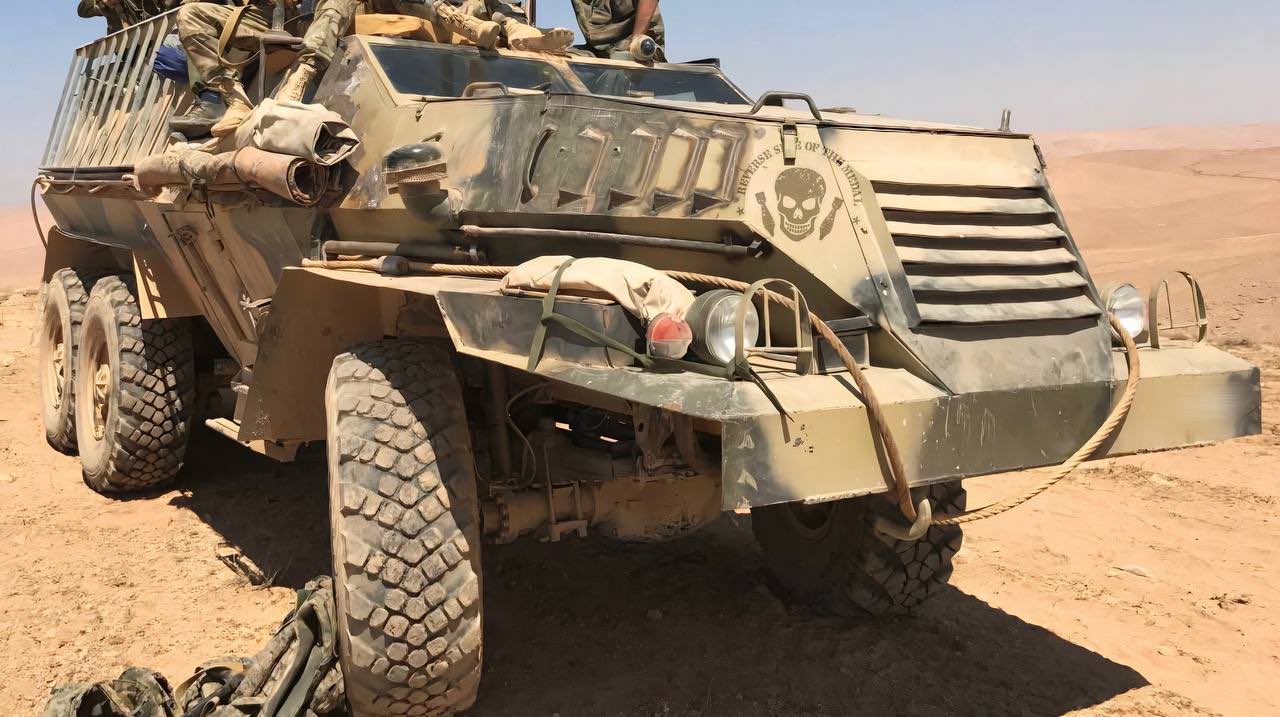


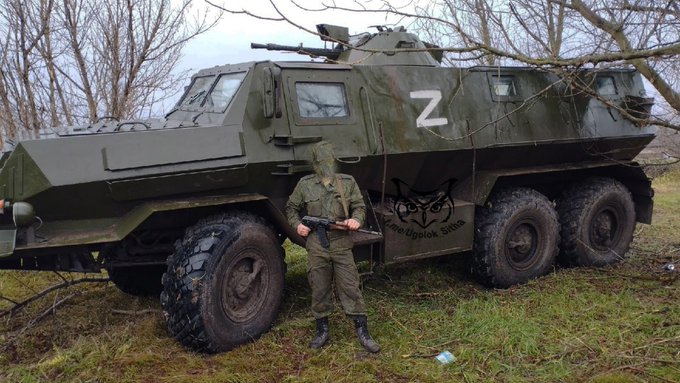
Related links
mil.in.uaen.defence-ua.com 07/2023
reddit.com
en.defence-ua.com 06/2022
On twitter
militarnyi.com
defence-blog.com
media.fab.com
armyrecognition.com
Footage, including the Schuka
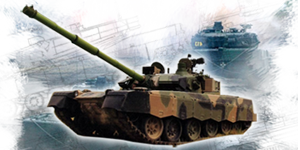
Modern Tanks
Modern MBTs posters

Denel Bagder (2018)

Type 16 MCV (2016)

Gepard 1A2 last rounds 2011

SANDF

Russian AFVs

Main Battle Tanks
